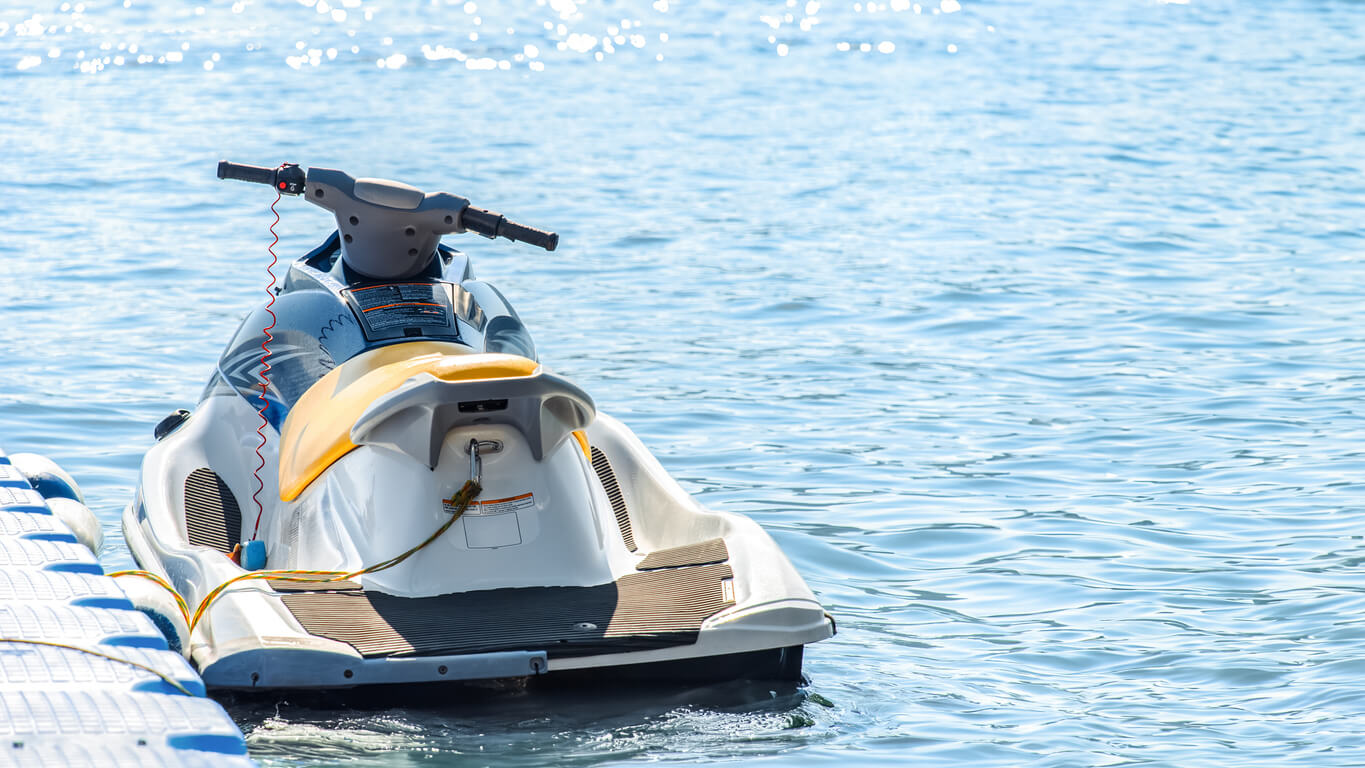8 things you need to know about your jet ski
20 June 2022

A jet ski (or other PWC) is a fun and relatively inexpensive way to enjoy life on the water all year round. But if you’re not clued up on everything you need to know about jet skis and PWCs, including safety equipment and general riding techniques, then you could land yourself in some dangerous situations.
Here are eight things you need to know about your jet ski…
1. Accident risks
No matter how experienced you are, anyone can crash while onboard. That’s why it’s so important to review the riding rules before heading out on the water. A lot of modern jet skis and PWCs will have their own extensive manuals, so it’s worth looking over this to make sure you’re riding safely.
2. Reboarding
Reboarding should you fall off is relatively easy. If you didn’t know, PWCs come in two different varieties: one whereby you can pre-set the idle speed before take off so when you fall off, it continues to circle around.
The second type is when you fall off, the engine cuts off with a special lanyard (engine kill switch) which must be properly attached to you before taking off. This way, if you fall off, the lanyard will go with you.
3. Safety equipment
All PWCs have specific safety requirements, including:
- Everyone on board must be wearing a life jacket at all times
- Riders must carry a fully-charged fire extinguisher and a sound-producing device in the event of an emergency
- If you're riding a lanyard-type ignition, you must attach the lanyard to your clothing, your wrist, or your life jacket
- You may only operate a PWC during daylight hours
4. Passengers belong on the back
Passengers who are not operating the PWC must sit at the back of the craft, behind the rider. If a passenger is too small to ride on the back and hold on to you, then unfortunately they can’t be on board.
5. PWC training courses
Operating a PWC can be tricky to get hold of, in terms of both steering and performance. If you’re a beginner, we’d recommend taking a training course just to be sure that you’re able to operate it safely.
6. Riding gear
Besides a life jacket, you’re not currently required to wear any other safety gear. However, for beginners, it’s recommended that you wear a helmet while getting used to operating your craft.
7. Daily maintenance
Owning a PWC isn’t without its responsibilities. You need to make sure you’re keeping up with daily maintenance like fuel checks, general cleaning and using a protective cover when not in use. This will help extend the lifetime of your jet ski and improve its performance.
8. Jet ski insurance
If you own a jet ski or other PWC, you may want to consider insuring it. Jet ski and PWC insurance through GJW Direct covers theft, damage, and injury caused while out on the water. Get a quote to see how much your cover could cost.
Please note the information provided on this page should not be taken as advice and has been written as a matter of opinion. For more on insurance cover and policy wording, see our homepage.
Got a question? Call our UK call centre 0151 473 8000
©Copyright Ripe Thinking Limited 2025. GJWDirect® is a registered trademark and a trading name of Ripe Insurance Services Limited which is Authorised and Regulated by the Financial Conduct Authority No.313411.
Registered office: The Royals, Altrincham Road, Manchester M22 4BJ. Registered in England No. 04507332.
